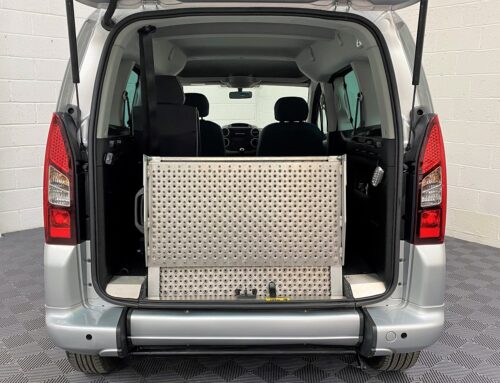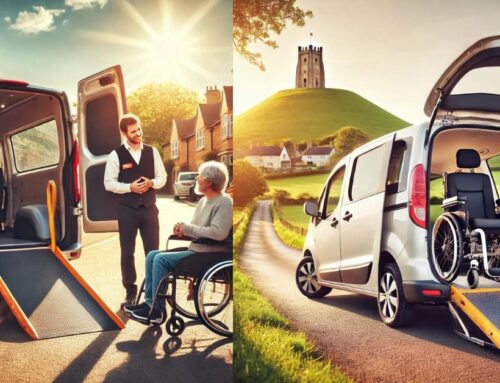Providing exceptional service to wheelchair users requires more than just having a wheelchair accessible vehicle (WAV); it demands a deep understanding of their unique needs and the ability to communicate effectively and sensitively.
Discover the ease of researching and buying a pre-loved and used quality WAV Car with Michael Harraway. Browse our current used wheelchair accessible vehicles for sale, read our WAV News articles for help and FAQ, Contact Us to arrange a forecourt viewing and test drive, or call us on 01934 820077 and chat to Mike direct with all of your requirements.
Great questions to prepare for a journey with a wheelchair user
Remember to ask the passenger for their preferences and instructions before you start assisting. For example, ask if they prefer to board the vehicle themselves or if they need help. If you have a spare blanket or cushions extra comfort, stow them in advance of your journey. Also, be aware of emergency procedures and have a plan in place for safely evacuating the passenger if needed. Respect the passenger’s privacy and personal space, so don’t touch the wheelchair or any mobility aids without advance permission.
Deploy the ramp or lift securely, ensuring it’s stable before the passenger begins boarding. You can offer help if needed, but let the passenger lead whenever possible. Some wheelchair users may prefer to board independently. Once the passenger is inside the vehicle, ensure the wheelchair is properly secured using the vehicle’s restraint system, double checking that all restraints are tight and secure.
Use your rear view mirror to gauge the body language of the passenger during the journey and chat about the Great British Weather recently, or about their destination and reasons for today’s visit. When it’s time to disembark, ask the passenger how they would like to proceed, using the ramp or lift as needed. Now it’s time to carefully unfasten all restraints and help guide the wheelchair down the ramp or lift.
Forward thinking when you park the car – ensure the passenger is safely positioned on a flat, stable surface and are easily able to move forwards. After the journey, ask the passenger if there’s anything you could do better next time as a way to learn something you may have missed.
Bristol Wheelchair Accessible Taxi Drivers and Car Owners
For taxi drivers in Bristol, navigating the ULEV (Ultra Low Emission Vehicle) scheme, and covering both short rides around Bath and longer journeys across Somerset and beyond, this knowledge is crucial.
Understanding the specific needs of wheelchair users, and knowing some essential questions to ask ahead of booking to ensure all requirements are met with specific advice for Bristol’s Clean Air Zone (CAZ) and ULEV Scheme
Bristol introduced a Clean Air Zone (CAZ) to reduce air pollution levels and improve public health. This scheme affects various areas in the city, particularly targeting older and more polluting vehicles.
Areas and Postcodes Covered BS1, BS2, parts of BS3, BS4, BS6, and BS8
The Clean Air Zone in Bristol covers a central area known as Small CAZ D, which includes key routes such as the Cumberland Basin and Portway. This zone is designed to improve air quality in areas where pollution levels are highest. These areas were chosen because they see significant traffic and have higher pollution levels.
Blue Badge Exemptions and Financial Support
Certain vehicles and individuals are eligible for exemptions or financial support:
- Residents within the CAZ area.
- Blue badge holders.
- Vehicles used by people with specific medical conditions.
- Financial support and grants are available to help residents and businesses transition to cleaner vehicles.
For more detailed information, including interactive maps and the vehicle checking tool, you can visit the Bristol City Council’s Clean Air Zone page (Bristol City Council)
Taxi drivers can not only meet regulatory requirements but also significantly enhance the travel experience for wheelchair users, whether they are making short trips in Bath or traveling across the country from Somerset.
How to load and disembark from a Wheelchair Accessible Vehicle
Deploy the ramp or lift securely. Ensure it’s stable before the passenger starts boarding. Offer to assist gently, but let the passenger lead whenever possible. Some wheelchair users may prefer to board independently.
Once the passenger is inside the vehicle, ensure the wheelchair is properly secured using the vehicle’s restraint system. Double-check that all restraints are tight and secure and the passenger feels comfy and relaxed.
When driving, check that the passenger is comfortable and that their wheelchair is stable. Remember to pack blankets or cushions just in case they are needed for extra comfort.
Using your in-car rear view mirror, observe the passenger’s body language during the journey to ensure they remain comfortable and they look happy!
When it’s time to park and disembark, ask the passenger how they would like to proceed. Use the ramp or lift as needed. Once out of the vehicle, ensure the passenger’s wheelchair is safely positioned on a flat, stable surface before you drive away.
Schedule an appointment here – if you have seen a wheelchair accessible vehicle on our website do remember to add this to your message.







